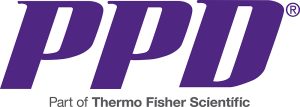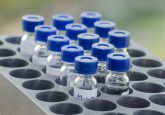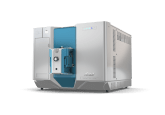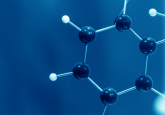Innovation in LC–MS and analytical instrumentation: an interview with Diego F. Cortes and William Mylott Jr
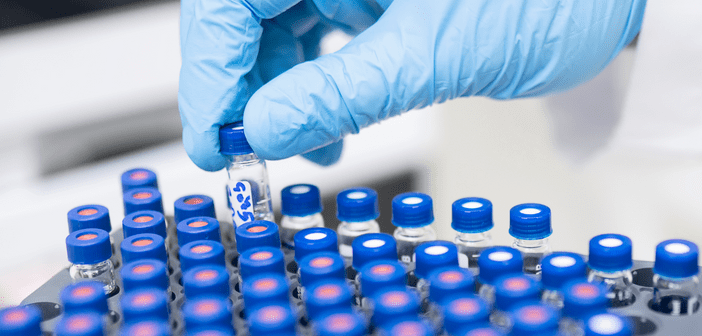
In this interview, experts Diego F. Cortes and William Mylott Jr. collaboratively discuss their opinions on innovations in technology in relation to LC–MS bioanalysis and the hurdles that may stand in the way of future LC–MS development.
 Diego F. Cortes
Diego F. Cortes
Associate Director, PPD Laboratory Services, Bioanalytical Lab
PPD, part of Thermo Fisher Scientific (VA, USA)
Diego F. Cortes is an Associate Director of the Biologics by LC-MS group at PPD laboratory services bioanalytical lab in Richmond (VA, USA). He received his PhD degree in genetics, bioinformatics and computational biology from Virginia Tech (VA, USA) in 2008. Diego was a Post-doctoral Fellow with the Department of Biology and the Virginia Bioinformatics Institute at Virginia Tech and the Department of Neurobiology, at Virginia Commonwealth University (VA, USA).
Diego has over 20 years of experience of scientific research in biological sciences, expanding from genomics and bioinformatics to metabolomics, proteomics, and bioanalysis. He currently manages a research and development team conducting bioanalytical method research and development primarily for protein biotherapeutics using LC–MS technologies
 William Mylott Jr.
William Mylott Jr.
Executive Director, PPD Laboratory Services, Bioanalytical Lab
PPD, part of Thermo Fisher Scientific (VA, USA)
William Mylott, Jr. is the Executive Director of Biologics by LC-MS group at PPD laboratory services bioanalytical lab in Richmond (VA, USA). William received his BSc in Chemistry from the State University of New York (USA), College at Brockport in 1992. William has over 30 years of experience in the areas of analytical and bioanalytical chemistry involving traditional small-molecule and large-molecule (biologics) therapeutics. In his current role, he is responsible for the management and scientific oversight of the development and validation of bioanalytical methods for both small and biologic-based therapeutics which include peptides, monoclonal antibodies (mAb), antibody–drug conjugates and other protein/peptide constructs.
- What are some current technologies and/or strategies within the bioanalytical field that have emerged and how have they been beneficial?
In recent years, several technologies have emerged to address lingering challenges facing the field of LC-MS/MS bioanalysis.
High-resolution mass spectrometry (HRMS) is increasingly popular. When compared to traditional triple quadrupole mass spectrometers, HRMS can provide improved selectivity (accurate mass) and sensitivity (signal-to-noise). This technology can, due to accurate mass/resolution capabilities, better separate and identify multiple components simultaneously and has proven especially useful in the analysis of complex samples such as biological matrices.
Microflow LC-MS/MS uses smaller scale columns and lower flow rates than traditional LC-MS/MS. While challenges around throughput persist, this technology reduces ion suppression and increases sensitivity, which are particularly useful for the analysis of small molecules and peptides.
Ion mobility spectrometry offers a supplementary separation dimension. That is, separation of ions based on size and shape provides an additional level of selectivity in complex samples.
Data-independent acquisition (DIA) is a newer mass spectrometry capability that permits simultaneous measurement of all ions in a sample, without the need for prior selection of specific ions of interest. This technology provides a more complete picture of the analytes present and is particularly useful in the analysis of complex samples wherein the target analyte is unknown. As such, DIA stands to have a significant impact on bioanalytical discovery and biomarker space.
- Could you list/describe the key factors that need to be considered when introducing new, emerging technology?
Introducing new or emerging bioanalytical technologies requires careful consideration of scientific and technical capabilities, validation and regulatory requirements, the cost-effectiveness of implementation, the availability of trained personnel and infrastructure and compatibility with existing workflows and processes. Other important factors include the potential impact on sample integrity, quality and data comparability, as well as the need for effective communication and collaboration between stakeholders. Ultimately, the successful introduction of new or emerging technologies in bioanalysis requires a thoughtful, collaborative approach with careful consideration of benefits and challenges.
- Which instrument currently in your lab do you consider to be the most ‘cutting-edge’?
Cutting-edge LC-MS/MS bioanalytical technologies are those that meet the regulatory requirements of agencies such as the US FDA and EMA, while providing the highest level of sensitivity, specificity, accuracy and precision. HRMS instruments such as the Thermo Scientific™ Orbitrap Exploris™ 240 and Thermo Scientific™ Orbitrap Exploris™ 480 Mass Spectrometers can provide increased selectivity and sensitivity, due to their resolution capabilities compared to traditional triple quadrupole mass spectrometry, making them a valuable tool for the analysis of complex matrices and low-level analytes. HRMS systems such as Orbitrap or Time-of-Flight (TOF) are cutting-edge in regulated bioanalysis. Hybrid mass spectrometers, such as the triple quadrupole-linear ion trap (e.g., SCIEX Triple Quad™ 7500 LC-MS/MS System greater sensitivity to quantify more trace analytes at lower levels across a broad suite of sample types and workflows and can provide increased selectivity over traditional triple quadrupole instruments, making it valuable for the analysis of complex samples. Moreover, robotic liquid handling (e.g., Hamilton Microlab STARlet and Hamilton NIMBUS) with flexible configurations, streamlined and automated sample preparation, which in turn has significantly reduced the risk of errors, improved reproducibility and increased throughput.
- What are some of the advantages of utilizing LC/MS for bioanalysis and how does its use augments traditional ligand-binding assays (LBAs)?
The hybridization of traditional LBAs with LC-MS/MS is becoming more commonplace within the bioanalytical community. These companion technologies offer complementary information, provide a more comprehensive understanding of the sample and allow for a more accurate assessment of drug safety and efficacy. To elaborate, LC-MS/MS and HRMS systems are more malleable than LBAs, in terms of sample types analyzed, and are especially useful in early drug development for emerging complex modalities where rapid and flexible assay modifications are crucial. LC-MS/MS and HRMS can simultaneously identify and quantify multiple analytes, metabolites, impurities and degradants; which can be particularly pertinent in situations where standalone LBAs suffer from matrix effects or cross-reactivity.
LC-MS has also found a niche in the analysis of multi-domain biotherapeutics. LC-MS provides information critical for understanding structure and function, optimizing performance and stability, assessing heterogeneity and impurities and monitoring of pharmacokinetics. Specifically, multi-domain biotherapeutics (e.g., such as fusion proteins and masked proteins (prodrugs)) are often subject to post-translational modifications – such as glycosylation, phosphorylation, or acetylation – which can affect their biological activity and pharmacokinetics. The multiplexing capabilities of LC-MS/MS allows for the concentration of each domain. Thus, LC-MS/MS permits the quantification of total and active concentrations of domain-specific modifications, which in turn provides insights into their impact on biotherapeutic performance. Moreover, LC-MS provides pharmacokinetic information related to biotherapeutic half-life, clearance and degradation pathways; this information is critical for optimizing dosing strategies and developing stable formulations.
- What obstacles stand in the way of future LC–MS development?
Several major obstacles hamper the widespread use and implementation of HRMS technology for intact protein quantitation. First, the complexity of protein samples makes it difficult to obtain accurate and reproducible measurements of intact proteins. Second, the lack of standardized workflows for protein quantification can lead to variability in results and hinder the comparability of data between labs. Third, the development and implementation of user-friendly software that is also compatible with regulatory requirements is a must. Finally, the high cost of HRMS equipment and the need for specialized expertise are barriers for smaller labs or academic settings. Addressing these challenges will require continued innovation and collaboration across multiple disciplines.
- How do you see LC/MS techniques growing within the field in the next 5 years?
Over the next 5 years, LC-MS technologies will continue to improve in terms of sensitivity, selectivity and throughput. In turn, these improvements and multiplexing capabilities will enable the detection and quantification of even lower analyte levels in complex matrices and will foster routine use in support of complex biological drug modalities and studies involving co-dosed biotherapeutics. The continued evolution of sample preparation techniques is expected, with a focus on improving reproducibility and throughput through enhanced workflow automation and technology miniaturization. Utilization of HRMS technology will continue to increase and will prove particularly useful for the quantification of large, complex molecules e.g., intact proteins. However, the development of standardized methods and protocols for protein quantification is needed. Implementation of big data and AI will become more commonplace and will enable more efficient data analysis, processing and interpretation.
Finally, as data sets continue to grow in size and complexity, new tools and techniques for data visualization are expected to emerge, enabling researchers to more easily extract meaningful insights from their data.
In association with:
The opinions expressed in this feature are those of PPD, part of Thermo Fisher Scientific and do not necessarily reflect the views of Bioanalysis Zone or Future Science Group.

